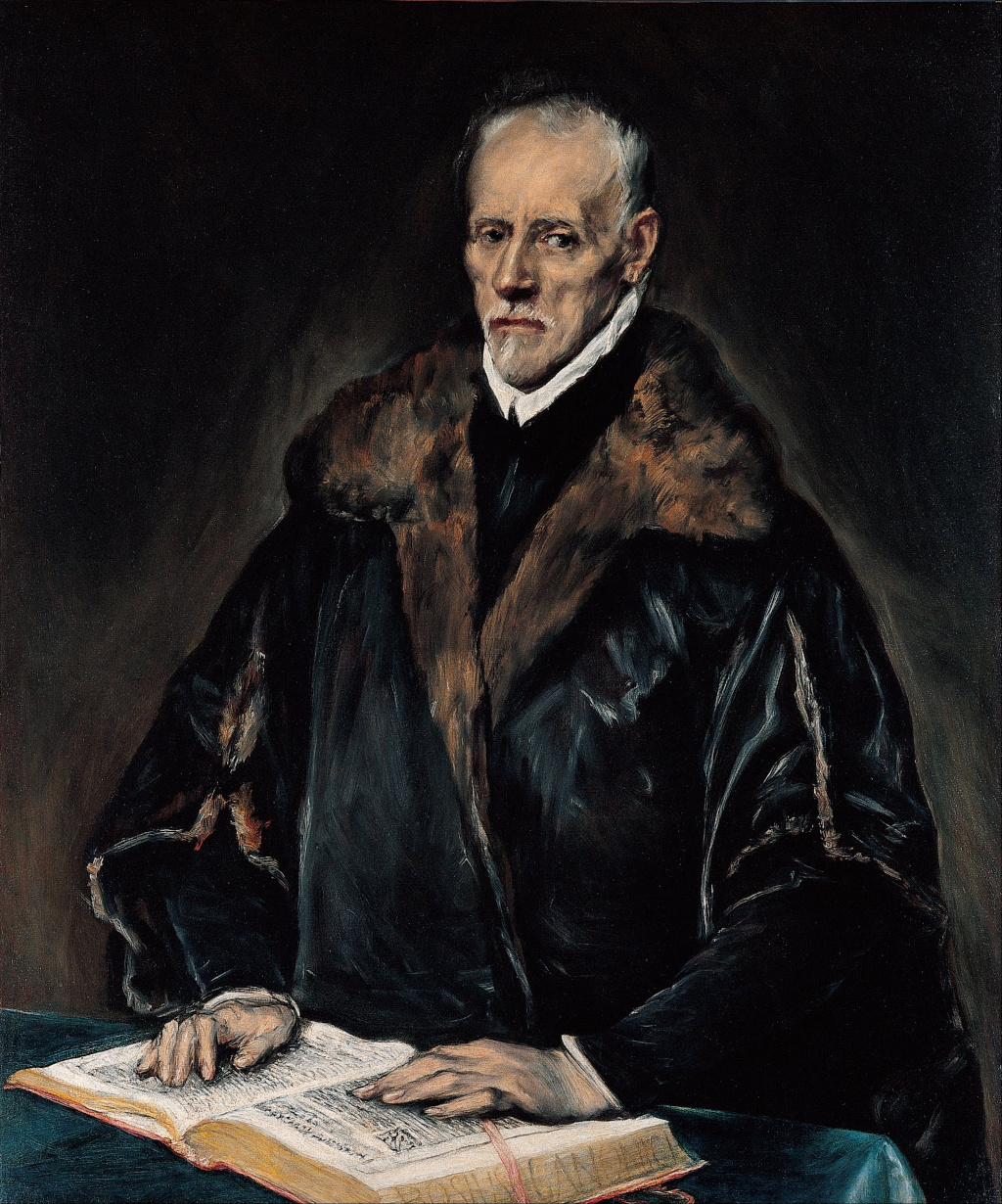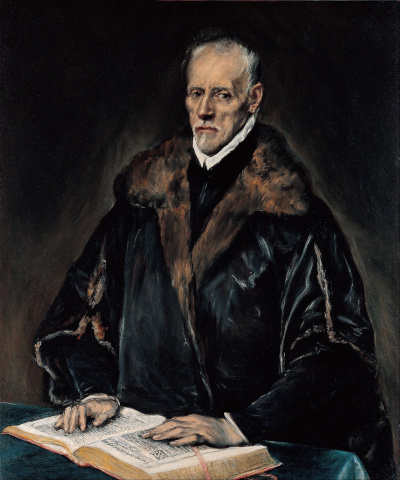This memorable portrait features Francisco de Pisa, a Spanish cleric, although some have argued over the identity of the subject in this portrait. El Greco completed the painting in 1610-1614 and it resides today within the permanent collection of the Kimbell Art Museum, Fort Worth, USA.
The subject looks directly at us within this painting, with a stern look suggesting confidence and a high social status. His hands are outstretched on a large book, and he wears a thick coat that is lined with fur, with further layers underneath. He is clearly ageing, with balding white hair and a gaunt facial structure. El Greco beautifully captures the impact of light upon his clothing, and helps us to understand more about the materials present in these garments. Behind the subject is a neutral, dark tone which avoids distracting us from the man himself. We immediately get a sense of this individual's character from this portrait, though unfortunately relatively little is known about him as compared to some of El Greco's other portraits from around this time. Being dated at 1610-1614, the painting therefore arrived very late in the artist's lifetime, and may have been one of the very last artworks that he worked on. He ran a large workshop by this stage of his career, though, and may have included their help on this piece.
The artist was tasked with producing many portraits towards the end of his career as local Spaniards wanted to be remembered in the best way possible. There was no photography or digital art at that time and so a well crafted portrait painting could greatily enhance one's own legacy. El Greco therefore became much in-demand and his reputation across Spain led to many seeking his services. Many of his paintings were already on display in prominent locations, which acted as a form of advertising, boosting his reputation and encouraging other patrons to seek him out. He tried to meet all new requests but could not do so on his own. His son would eventually run his workshop and that enabled the family to continue to strengthen their position within Toledo. He specialised in religious art but portraiture helped to vary his oeuvre and smaller projects could be organised in between his larger undertakings.
El Greco took in many influences as his career progressed. He was born under the rule of Venice in modern day Crete, and eventually moved to Italy to learn from the great masters. His early work was heavily influenced by those great names but he eventually was drawn to Spain. Here he would come across new ideas and start to forge his own path for the first time. His expressive nature became more and more prominent, and the way in which he is remembered today takes much from the latter part of his career. This portrait of Francisco de Pisa comes right at the end of his life, and many of those elements of his evolution can be found within this charming artwork from the early 17th century. After his death many artists would continue to work in a similar fashion, helping his legacy to live on for centuries to come.





